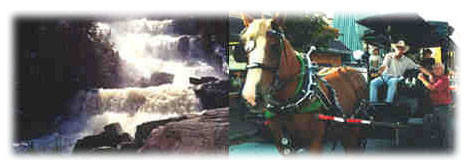 |
|||||


|
|
|
|||
|
|
|

|
|||
|
Français |
|
||||
|
Italiano |
|
||||
|
Español |
|
||||
|
Deutsch |
|
||||
|
|
|
||||
|
|
|
Lodging |
Restaurants |
Directories |
Airport |
|
|
|
Page |
Ste-Agathe |
Mt-Tremblant |
St-Jovite |
 |
|||||


|
|
|
|||
|
|
|

|
|||
|
Français |
|
||||
|
Italiano |
|
||||
|
Español |
|
||||
|
Deutsch |
|
||||
|
|
|
||||
|
|
|
Lodging |
Restaurants |
Directories |
Airport |
|
|
|
Page |
Ste-Agathe |
Mt-Tremblant |
St-Jovite |
|
Why does the dark side of the Moon has so many craters, while the viewable side has less? Here is my explanation. As the Moon always present us the same side, it also means that the dark side of the Moon is always facing the outer space. As space is always sending us all sorts of boulders which eventually crash on celestial bodies, in this case the Moon, the viewable side of the Moon is partly protected by the presence of the Earth. The Earth is a partial shield for the Moon. Even if the probability is just slightly different, the accumulation of this difference over the billions of years can easily explain the high numbers of craters on the dark side of the Moon, compared to the viewable side. And as the Moon doesn't have an atmosphere, there is no erosion to erase the craters. The reverse is also true: the Moon is a partial shield for the Earth. But there is erosion on Earth that erases the resulting effects. Now the next question: why does the Moon always present us the same side? Imagine a beach ball that you throw on the water. The beach ball will turn in all directions. If you stick a quarter dollar on the surface of the beach ball, it will float always on the same side, with the quarter dollar on the water side. If the Moon present a density anomaly on one side, then the result will be the same. The side with more density will "float" where gravity is pulling the most. Because the Moon is similar to a floating beach ball, pulled on one side by gravity and pulled from the other side by the centrifugal force generated by it's rotation around Earth (which acts similar to the gravity, but reversed). Why does the Moon have a density anomaly? Many explanations are possible. As an example, a very dense meteorite could have landed on one side, or when the Moon was born, it could have not been necessarily gaseous or liquid, just like major celestial bodies, and have density anomalies. Pierre Forget, August 7 2011 You can write your comments and we will add them at the end of this article if they are relevant. |
|
All rights reserved |